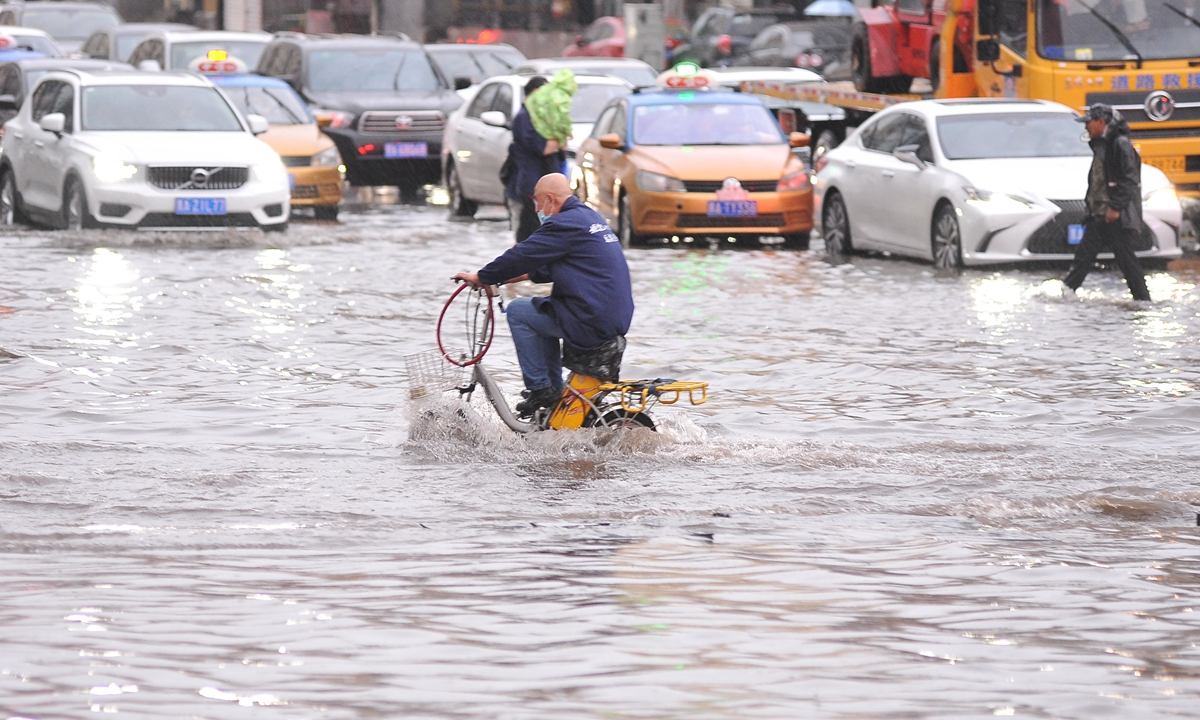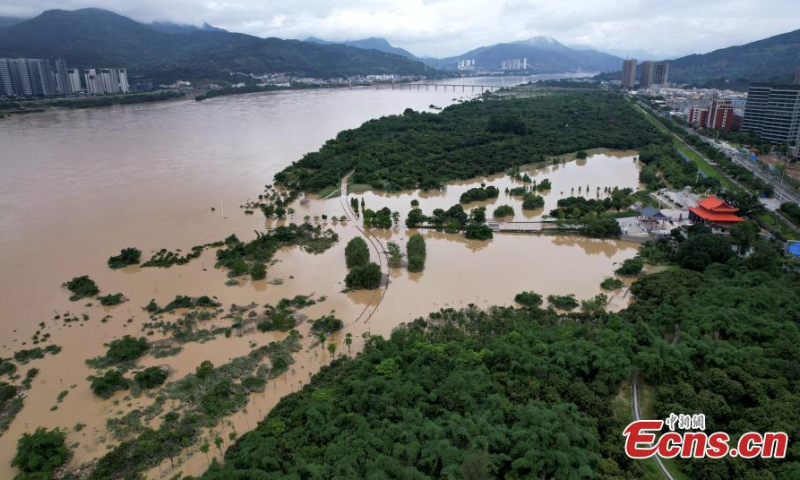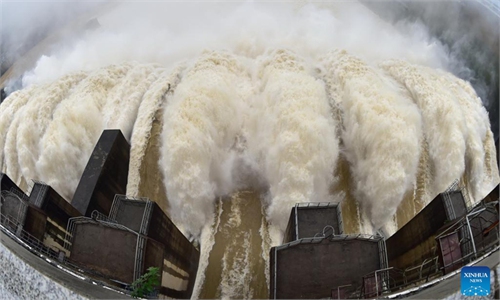
A resident rides an electric bike on a flooded road in Harbin, capital of Northeast China's Heilongjiang Province on June 16, 2022. A sudden storm hit Harbin on the day, prompting the city's meteorological authorities to issue a yellow rainstorm alert. Photo: VCG
East China's Fujian and Jiangxi provinces received heavy and occasionally historic amounts of rain in recent days, leading to floods and landslides, as the National Meteorological Center issued a blue rain alert for various parts of the country on Thursday.
Heavy rain is expected to hit parts of Fujian, southern Jiangxi, southern Hunan in Central China and other regions on Thursday and Friday, with some areas getting rainfall ranging from 100 millimeters to 160 millimeters, said the alert.
Since June 12, many houses, shops, vehicles and crops have been flooded, and some roads, telecommunications infrastructure, electricity facilities and other infrastructure were destroyed, said the Jiangxi emergency management department on Thursday.
In the province of Fujian, some places have issued a red alert for heavy rain, and several rivers have seen significant floods. In the city of Longyan, a section of a road near a tunnel collapsed on Thursday due to the continuous rainfall. Traffic on one side is expected to resume soon, according to media reports.

Aerial view of Jiangbin wetland park submerged in floodwater after torrential rain in Fuzhou, Fujian Province, June 15, 2022. (Photo: China News Service/Wang Dongming)
Since June 5, Fujian has seen continuous rainfall with some regions' totals ranging from 250 to 400 millimeters. In the cities of Sanming and Nanping, some regions' rainfall reached historic levels of 600-700 millimeters, according to media reports.
The central government is trying to assist the flood-infected regions. The China National Commission for Disaster Reduction and the Ministry of Emergency Management on Wednesday initiated a level-IV emergency response for flood control and also dispatched working teams to assist with local flood-control efforts.
On June 10, China allocated 360 million yuan ($53.72 million) from its central natural disaster relief funds to assist local governments including Hunan, Guangxi and Guizhou with flood control and disaster relief.
In Ganzhou, Jiangxi Province, the authorities have provided more than 50,000 pieces of flood relief items including tents, towel blankets and folding beds, and more than 24,000 cartons of mineral water to ensure the basic lives of the affected residents.
A local official from the Fujian emergency management department confirmed to the Global Times on Thursday that the provincial authorities are working with different departments including emergency response, water conservancy, meteorology and natural resources to further arrange the flood control and emergency rescue efforts.
"We have established interactive mechanisms with other departments with pre-arranged plans," said the official. For instance, the flood control offices, and the meteorological, hydrological and natural resources departments will keep monitoring and make rolling forecasts to ensure a rapid emergency response and prevent secondary disasters.
This round of rainfall covers a large area and some regions are seeing heavy rain, especially in Jiangxi and Fujian, Wu Rui, chief service officer at the Shanghai Meteorological Bureau told the Global Times on Thursday.
Cold air from the north moving southward and the warm and humid air currents are intersecting in Jiangnan, regions south of the Yangtze River, which increases the uncertainty of the forecast.

